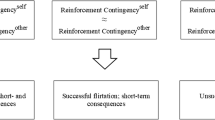Abstract
It is a truism to say that the complete and accurate observation of a human being is impossible. Perception of other persons, just as the perception of the world around us, must utilize some ways of reducing and ordering the impact of a myriad of sensory messages upon the observer. These processes are vitally important biological defenses even to the researcher who strives so constantly for complete and accurate appraisal of the data under study. As Robert Oppenheimer (1958) has said so aptly:
There is much more that one might know than any of us are ever going to know. . . . This has nothing to do with the trivial fact that we don’t work hard enough; nor . . . that things are difficult to learn. It is, rather, that any form of knowledge really precludes other forms; that any serious study of one thing cuts out some other part of your life. Narrowness is not an accident... but a condition of knowledge—by the very techniques, powers, and facts of its acquisition and by the way it organizes the chaos that is the world around us. (p. 7)
Access this chapter
Tax calculation will be finalised at checkout
Purchases are for personal use only
Preview
Unable to display preview. Download preview PDF.
Similar content being viewed by others
References
Abraham, K. Selected papers on psychoanalysis. Translated by D. Bryan and A. Strachey. London: Hogarth, 1927.
Adler, A. The practice and theory of individual psychology. Translated by P. Radin. London: Routledge, 1950.
Bales, R. F. Interaction process analysis. Reading, Mass.: Addison-Wesley, 1950.
Chance, Erika. A study of transference in group psychotherapy. Int. J. Group Psychother., 2: 40–53, 1952.
Chance, Erika. The father’s perception of his first child. Unpublished doctoral dissertation, Stanford University, 1953.
Chance, Erika. Families in treatment. New York: Basic Books, 1959.
Chance, Erika, and Arnold, Jack. The effect of professional training, experience, and preference for a theoretical system upon clinical case description. Human Relations, 13: 195–213, 1960.
Fenichel, O. The psychoanalytic theory of neurosis. New York: Norton, 1945.
Freedman, M. B., Leary, T. F., Ossorio, A. G., and Coffery, H. S. Interpersonal dimensions of personality. J. Vers., 20: 143–161, 1951.
Freud, S. The dynamics of the transference (1912), Collected papers, II. London: Hogarth, 1925.
Freud, S. Collected papers. London: Hogarth, 1950.
Fromm, E. Escape from freedom. New York: Holt, Rinehart and Winston, 1941.
Fromm, E. Man for himself. New York: Holt, Rinehart and Winston, 1947.
Horney, Karen. The neurotic personality of our time. New York: Norton, 1937.
Jung, C. G. Psychological types or the psychology of individuation. London: Routledge, 1932.
Kelly, G. A. The psychology of personal constructs, Vol. I: A theory of personality. New York: Norton, 1955.
Meehl, P. E. Clinical versus statistical prediction. Minneapolis: Univ. of Minnesota Press, 1954.
Mowrer, O. H. Further studies utilizing the discomfort relief quotient. In, O. H. Mowrer (Ed.), Psychotherapy, theory, and research. New York: Ronald, 1953. Pp. 257–295.
Oppenheimer, J. R. A talk to young scientists. Sci. Perspectives, 1 (2): 6–7, 17, 1958.
Reich, W. Character analysis, principles, and techniques for psychoanalysts in practice and in training. Translated by T. P. Wolff. New York: Orgone Institute Press, 1945.
Riesman, D. The lonely crowd. New Haven: Yale University Press, 1950.
Rogers, C. R. A study of the process and outcomes of client-centered therapy. Mimeographed first and second interim reports. Chicago: Counseling Center, Univ. of Chicago, 1949, 1950.
Thompson, Clara. Psychoanalysis, evolution and development. New York: Hermitage House, 1950.
Rights and permissions
Copyright information
© 1966 Meredith Publishing Company
About this chapter
Cite this chapter
Chance, E. (1966). Content analysis of verbalizations about interpersonal experience. In: Methods of Research in Psychotherapy. The Century Psychology Series. Springer, Boston, MA. https://doi.org/10.1007/978-1-4684-6045-2_12
Download citation
DOI: https://doi.org/10.1007/978-1-4684-6045-2_12
Publisher Name: Springer, Boston, MA
Print ISBN: 978-1-4684-6047-6
Online ISBN: 978-1-4684-6045-2
eBook Packages: Springer Book Archive




